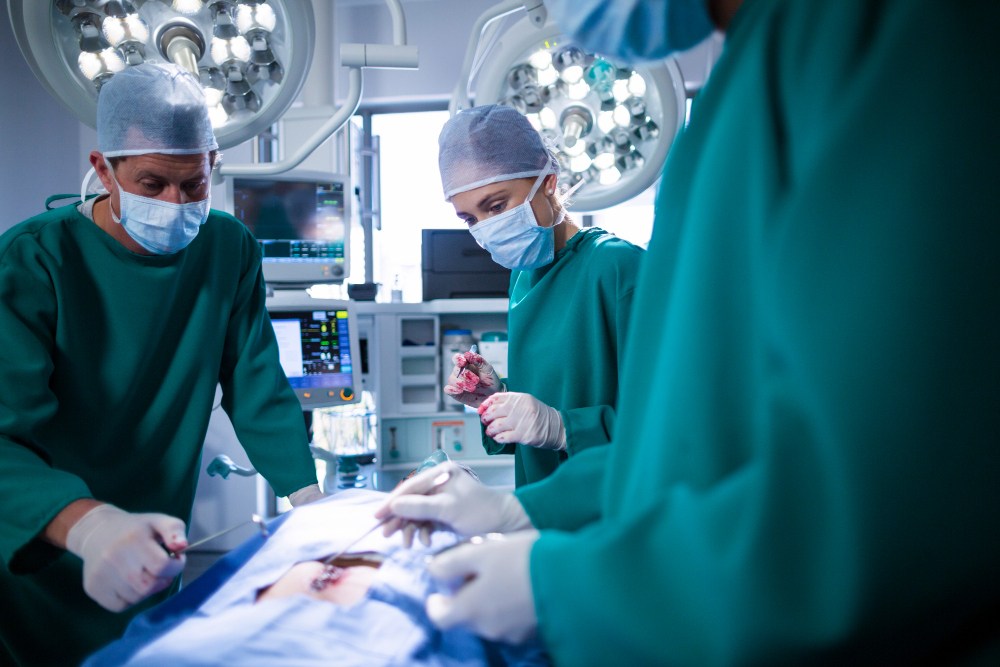-
 Mail us
Mail usinfo@myhealthhospitals.com
-
 Toll Free
Toll Free+91 9111674111
- Book Appointment
OBS and Gynecology
My health hospitals has Best Gynaecologists with 10 + years of experience in the field of gynaecolical diseases and treatment especially Uterine fibroids and their symptoms with advanced and best surgical technology (Laparoscopy) with no complications and best results through safe and painless surgery with less hospital stay duration .
Uterine fibroids are benign growths of the uterus that often appear in the uterus during child bearing years. Also called leiomyomas or myomas,fibroids never develop into cancer. Fibroids range in size of a peanut to bulky and large masses that can distort the uterus. It can be single or multiple . Most women have uterine fibroids sometime in their life time but can be un recognised as they usually donot cause any symptoms and may discovered incidentally during a pelvic examination or on an ultrasound done for abnormal uterine bleeding
In cases where uterine fibroids do cause symptoms or require intervention, seeking medical guidance is essential. Identifying the best hospital for uterine fibroids can be crucial for receiving comprehensive care and effective treatment. Healthcare providers at these institutions can offer expert guidance on the management of fibroids. Additionally, if a woman is experiencing symptoms such as abnormal uterine bleeding or pelvic pain, it's important to consider potential conditions beyond fibroids. Adenomyosis is one such condition that may present with similar symptoms. Determining the best treatment for adenomyosis requires consultation with knowledgeable healthcare professionals who can provide personalized advice.
For individuals seeking surgical intervention for uterine fibroids, finding the best hospital for fibroid surgery is a key consideration. Skilled surgeons and state-of-the-art facilities contribute to successful outcomes in fibroid surgery. Residents in Hyderabad may specifically look for adenomyosis and fibroid treatment in the area. Locating the best gynecologists for adenomyosis treatment in Hyderabad is essential for receiving specialized care. Identifying the best adenomyosis treatment doctors in Hyderabad ensures access to expert opinions and tailored treatment plans.
When considering adenomyosis treatment, individuals should prioritize finding the best adenomyosis treatment in Hyderabad. Expertise in this specific condition can lead to more effective management and improved quality of life for patients. In conclusion, while uterine fibroids are common and often asymptomatic, seeking the expertise of healthcare professionals becomes crucial when symptoms arise or intervention is necessary. Identifying the best hospital for uterine fibroids and specialists in adenomyosis treatment is paramount for receiving comprehensive and personalized care.
Some inguinal hernias have no apparent cause. Others might occur as a result of:
Genetics - Fibroids can occur due to changes in genetics.
Hormones - Estrogen and progesterone are the two hormones that stimulate the development of the uterine lining during each menstrual cycle and abnormality in these hormone levels appear to promote the growth of fibroids.
Growth factors – Growth factors such as insulin-like growth factor(IGF_!), may cause fibroid growth.
Usiually most fibroids that have been present during the time of pregnancy shrink or disappear immediatly after pregnancy, as the hormonal levels and uterus get back to normal size.
Race - Black women are more likely to have fibroids than other racial groups and they usually occur in younger age group and are larger with more severe symptoms.
Heredity – Any family history with your mother or sister had fibroids, you are likely to have developing them.
Other factors with increased risk - Early Menarche , obesity , vitamin D deficiency , diet higher in red meat and lower in green leafy vegetables, less fruit and dairy; more alcohol intake drinking alcohol, appear to increase your risk of developing fibroids.

Many women donot have any symptoms. In those who have symptoms it depends on the location, size and number of fibroids.
Fibroids are usually classified based on their their location.


Traetment options depends on the size , type , location and presence of any symptoms related to fibroid -
Watchful waiting – Treatment option in patient in whom fibroids are small and have no or mild symptoms.
Medications target hormones that regulate menstrual cycle and useful in treating symptoms related to fibroid such as heavy bleeding . They donot eliminate fibroids completely , but may be helpful in shrinking them. Medications are advised by treating gynaecologists ony after thorough examination and investigation reports and they usually include -
Certain procedures( minimally invasive ) can destroy or shrink uterine fibroids without actually undergoing major surgery and advised by the gynaecologist based on the size , location and type of fibroids . They include:
Options for surgical procedures include:

Fibroids are a very common type of growth. Approximately 40% to 80% of people with a uterus have fibroids. They occur most often in people between 30 and 50 years old. People who haven’t had their first period (menstruation) yet typically don’t have fibroids. They’re also less common in people who’ve entered menopause.
If you have large fibroids or your symptoms are causing you pain and discomfort, getting treatment may be the best option. Only you and your provider can decide the best course of treatment or if treatment is necessary.
In general, you can’t prevent fibroids. You can reduce your risk by maintaining a healthy body weight and getting regular pelvic exams. If you have small fibroids, develop a plan with your healthcare provider to monitor them.
Yes, it’s possible that large uterine fibroids can cause your stomach to bloat or appear larger.
It’s extremely rare for a fibroid to go through changes that transform it into a cancerous (malignant) tumor. In fact, 1 out of 350 people with fibroids will develop cancer. There’s no test that’s 100% predictive in detecting rare fibroid-related cancers. However, people who have rapid growth of uterine fibroids or fibroids that grow after menopause should be evaluated immediately.
If you cannot find answers to your queries, please fill out the ENQUIRY form or call the number below. We will contact you shortly
+91 9111674111